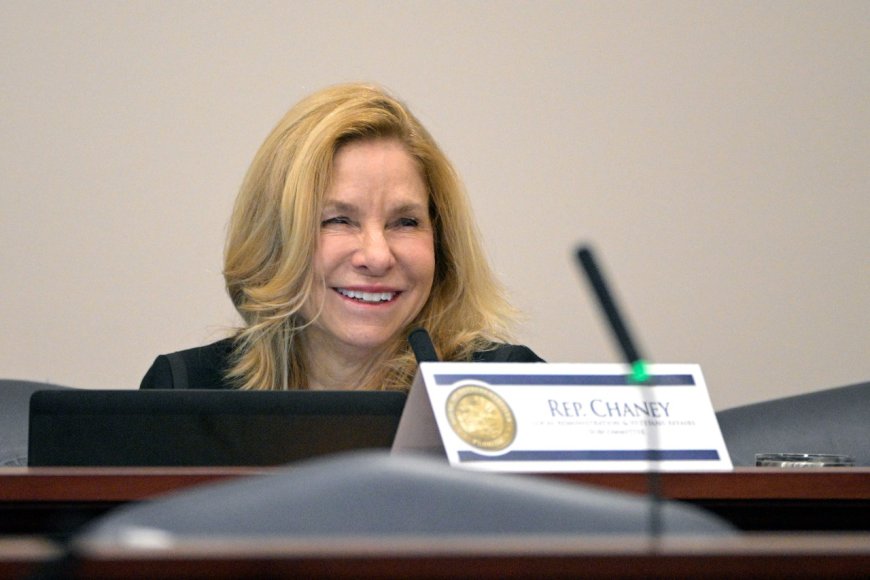Tampa Bay lawmaker files bill weakening child labor laws
Tampa Bay lawmaker files bill weakening child labor laws WFLA

Proposed Bill to Weaken Child Labor Laws in Florida

ST. PETERSBURG, Fla. (WFLA) — A Florida lawmaker filed a bill in the state House of Representatives that would weaken certain child labor laws.
Introduction
Republican Rep. Linda Chaney, whose district covers part of southwestern Pinellas County, filed HB-49 on Monday.
Current Child Labor Laws in Florida
Florida law currently prohibits 16 and 17-year-olds from working before 6:30 a.m., after 11:00 p.m., or for more than eight hours when there is school the next day. The bill would do away with those restrictions, as well as the requirement for a 30 minute break after four consecutive hours of work.
Proposed Changes
HB-49, which changes the word “children” under the current law to read “minors,” would get rid of the policy limiting teenage workers 30 hours per week when school is in session. It would also eliminate language restricting teenage employees to working six days per week.
Impact on Sustainable Development Goals (SDGs)
- The proposed bill may have implications for SDG 8: Decent Work and Economic Growth, as it weakens child labor laws and potentially exposes minors to longer working hours.
- It could also impact SDG 4: Quality Education, as longer working hours for teenagers may negatively affect their ability to focus on their studies.
Restrictions on Municipalities
Under Chaney’s bill, municipalities would not be allowed to establish their own curfews or ordinances “that regulate the presence of minors in public places and establishments” and are more “stringent” than the proposed law.
Timeline
The 2024 legislative session begins in January. If passed, the bill would take effect July 1, 2024.
SDGs, Targets, and Indicators in the Article
1. Which SDGs are addressed or connected to the issues highlighted in the article?
- SDG 8: Decent Work and Economic Growth
- SDG 4: Quality Education
The article discusses a bill that would weaken certain child labor laws in Florida. This issue is connected to SDG 8, which focuses on promoting sustained, inclusive, and sustainable economic growth, full and productive employment, and decent work for all. It is also connected to SDG 4, which aims to ensure inclusive and equitable quality education and promote lifelong learning opportunities for all.
2. What specific targets under those SDGs can be identified based on the article’s content?
- SDG 8.7: Take immediate and effective measures to eradicate forced labor, end modern slavery and human trafficking, and secure the prohibition and elimination of the worst forms of child labor.
- SDG 4.4: By 2030, substantially increase the number of youth and adults who have relevant skills, including technical and vocational skills, for employment, decent jobs, and entrepreneurship.
The article highlights the weakening of child labor laws, which goes against the target of SDG 8.7 to eradicate the worst forms of child labor. Additionally, by removing restrictions on teenage workers, it may impact the target of SDG 4.4 to ensure that youth have relevant skills for decent employment.
3. Are there any indicators mentioned or implied in the article that can be used to measure progress towards the identified targets?
Yes, there are indicators mentioned in the article that can be used to measure progress towards the identified targets. These include:
- Number of hours worked by 16 and 17-year-olds
- Existence of restrictions on teenage employees
- Number of municipalities with curfews or ordinances regulating the presence of minors in public places and establishments
The article discusses the removal of restrictions on the number of hours worked by 16 and 17-year-olds, which can be measured to assess progress towards eradicating the worst forms of child labor (SDG 8.7). The article also mentions the elimination of curfews or ordinances that regulate the presence of minors, which can be measured to evaluate progress towards ensuring quality education and opportunities for youth (SDG 4.4).
Table: SDGs, Targets, and Indicators
| SDGs | Targets | Indicators |
|---|---|---|
| SDG 8: Decent Work and Economic Growth | Target 8.7: Take immediate and effective measures to eradicate forced labor, end modern slavery and human trafficking, and secure the prohibition and elimination of the worst forms of child labor. | – Number of hours worked by 16 and 17-year-olds – Existence of restrictions on teenage employees |
| SDG 4: Quality Education | Target 4.4: By 2030, substantially increase the number of youth and adults who have relevant skills, including technical and vocational skills, for employment, decent jobs, and entrepreneurship. | – Number of municipalities with curfews or ordinances regulating the presence of minors in public places and establishments |
Behold! This splendid article springs forth from the wellspring of knowledge, shaped by a wondrous proprietary AI technology that delved into a vast ocean of data, illuminating the path towards the Sustainable Development Goals. Remember that all rights are reserved by SDG Investors LLC, empowering us to champion progress together.
Source: wfla.com

Join us, as fellow seekers of change, on a transformative journey at https://sdgtalks.ai/welcome, where you can become a member and actively contribute to shaping a brighter future.







